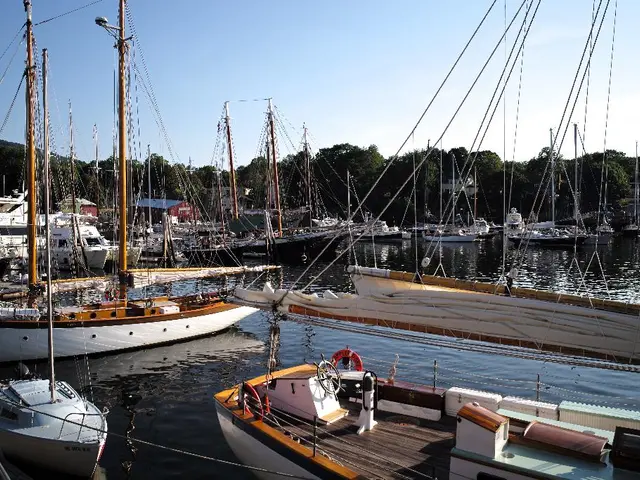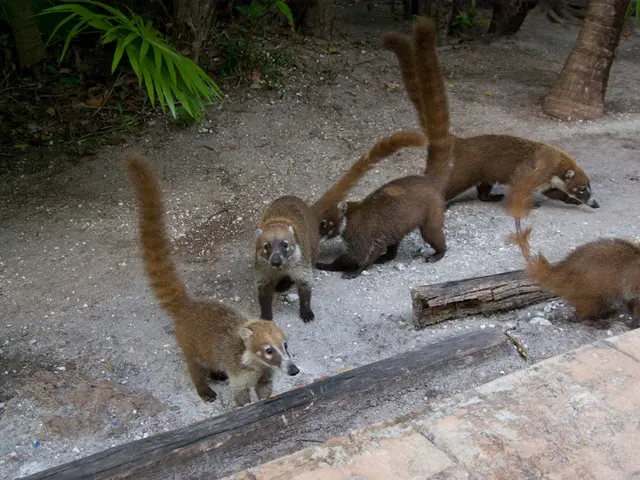Hawaii's Top Sights: Stunning Scenery and Historical Importance
Take a journey through the Rainbow State's rich history and natural wonders by visiting these must-see Hawaii landmarks scattered across the major islands. Here's what you should put on your explorer's itinerary.
Oahu
Pearl Harbor National Memorial
Located in Honolulu, this historical site bears witness to the World War II attack on December 7, 1941. It's a poignant reminder of a pivotal moment in U.S. history and one of the most-visited national historic landmarks in the nation.
Iolani Palace
This iconic palace, the only royal palace in the United States, was the official residence of the Hawaiian kingdom. Located in downtown Honolulu, it served as the political hub during the reign of King Kamehameha III and Queen Lili'uokalani.
Diamond Head State Monument
A fantastic geological feature near Waikiki, this recognizable crater offers terrific hikes for unbeatable views of Honolulu and the Pacific Ocean.
Nu'uanu Pali Lookout
A strategic and historical site, this scenic spot provides picturesque views of Oahu's windward coast, commemorating a significant battle in Hawaiian history.
Bishop Museum
This museum is dedicated to preserving and showcasing the history, culture, and artifacts of Native Hawaiians, Polynesia, and Pacific Islanders.
Maui
Lahaina Historic District
Once a capital of the Hawaiian Kingdom and a vibrant whaling town, this district offers a fascinating blend of missionary history, trade, and multicultural fusion. Highlights include the Baldwin House, Wo Hing Museum, and whaling museums.
Haleakala National Park
Home to the enormous Haleakala Volcano, this national park offers the chance to witness spectacular sunrises, tour unique high-altitude ecosystems, and discover the volcanic landscape.
Makena State Park
Also known as Big Beach, this extensive stretch of golden sand is perfect for sunbathing, swimming, and paddleboarding.
Iao Valley State Monument
Named for the towering green-covered peak, Iao Needle, this lush park offers scenic views and is a culturally significant site in Hawaiian culture, with ties to the Battle of Kepaniwai.
'Iao Theater
This restored historic venue in Wailuku showcases local plays, concerts, and performances, offering a glimpse into Maui's cultural life.
Kauai
Russian Fort Elizabeth
Built by the Russian-American Company in the early 19th century, this national historic landmark near Waimea reflects, albeit briefly, the island's unusual period of foreign influence.
Wailua River State Park
Home to ancient Hawaiian temples and sacred sites, this park offers the "Trail to the Fern Grotto," a lush, peaceful journey through Hawaiian history and beauty.
Waimea Canyon State Park
Dubbed the "Grand Canyon of the Pacific," this expansive canyon offers mesmerizing landscapes, overlooks, and hiking trails with breathtaking views of Red and Green valleys.
Hanalei Bay
A picturesque crescent-shaped beach surrounded by mountains, Hanalei Bay offers an ideal location for swimming, paddleboarding, and enjoying the relaxed North Shore lifestyle.
Kīlauea Lighthouse
Perched on a dramatic peninsula, this historic lighthouse offers panoramic ocean views and is a sanctuary for seabirds like the red-footed booby.
Big Island (Hawai'i Island)
Hawai'i Volcanoes National Park
This national park is nestled amidst two active volcanoes: Mauna Loa and Kīlauea - offering the rare opportunity to observe the creation of new land in real time.
Mauna Kea
Standing at 13,803 feet above sea level, Mauna Kea Volcano is the tallest mountain on Earth when measured from its base on the ocean floor to its summit. This sacred mountain for Native Hawaiians is also an essential site for astronomical research.
Hulihe'e Palace
Once a vacation home for Hawaiian royalty, this palace now operates as a museum, preserving the stories, furnishings, and artifacts of Native Hawaiian leaders.
Puʻuhonua o Hōnaunau (City of Refuge)
This national historic landmark serves as a memorial to ancient Hawaiian culture and justice. Once a sanctuary for those who violated sacred laws, Puʻuhonua o Hōnaunau offers a glimpse into Hawaii's spiritual heritage.
Kealakekua Bay
You can visit this marine life conservation district, which marks the spot where Captain James Cook first landed in Hawaii and ultimately met his end. The bay is perfect for snorkeling, kayaking, and exploring the vibrant underwater life.
These top landmarks offer an unforgettable exploration of the natural, historical, and cultural diversity unique to each Hawaiian island.
- In Oahu, the Pearl Harbor National Memorial, a significant historical site, chronicles the World War II attack on December 7, 1941, and is one of the most-visited national historic landmarks in the U.S.
- The Bishop Museum in Honolulu showcases the history, culture, and artifacts of Native Hawaiians, Polynesia, and Pacific Islanders, offering a comprehensive educational experience.
- On Maui, Haleakala National Park offers the chance to witness breathtaking sunrises, tour unique high-altitude ecosystems, and discover the volcanic landscape of the enormous Haleakala Volcano.
- In Kauai, the Wailua River State Park hosts the "Trail to the Fern Grotto," a lush, peaceful journey through Hawaiian history and beauty, featuring ancient Hawaiian temples and sacred sites.
- On Big Island, Puʻuhonua o Hōnaunau (City of Refuge) is a national historic landmark that serves as a memorial to ancient Hawaiian culture and justice, and once served as a sanctuary for those who violated sacred laws.






